Our Library
Explore our publications, from research papers and series to educational materials, covering all aspects of conflict transformation and peace promotion.
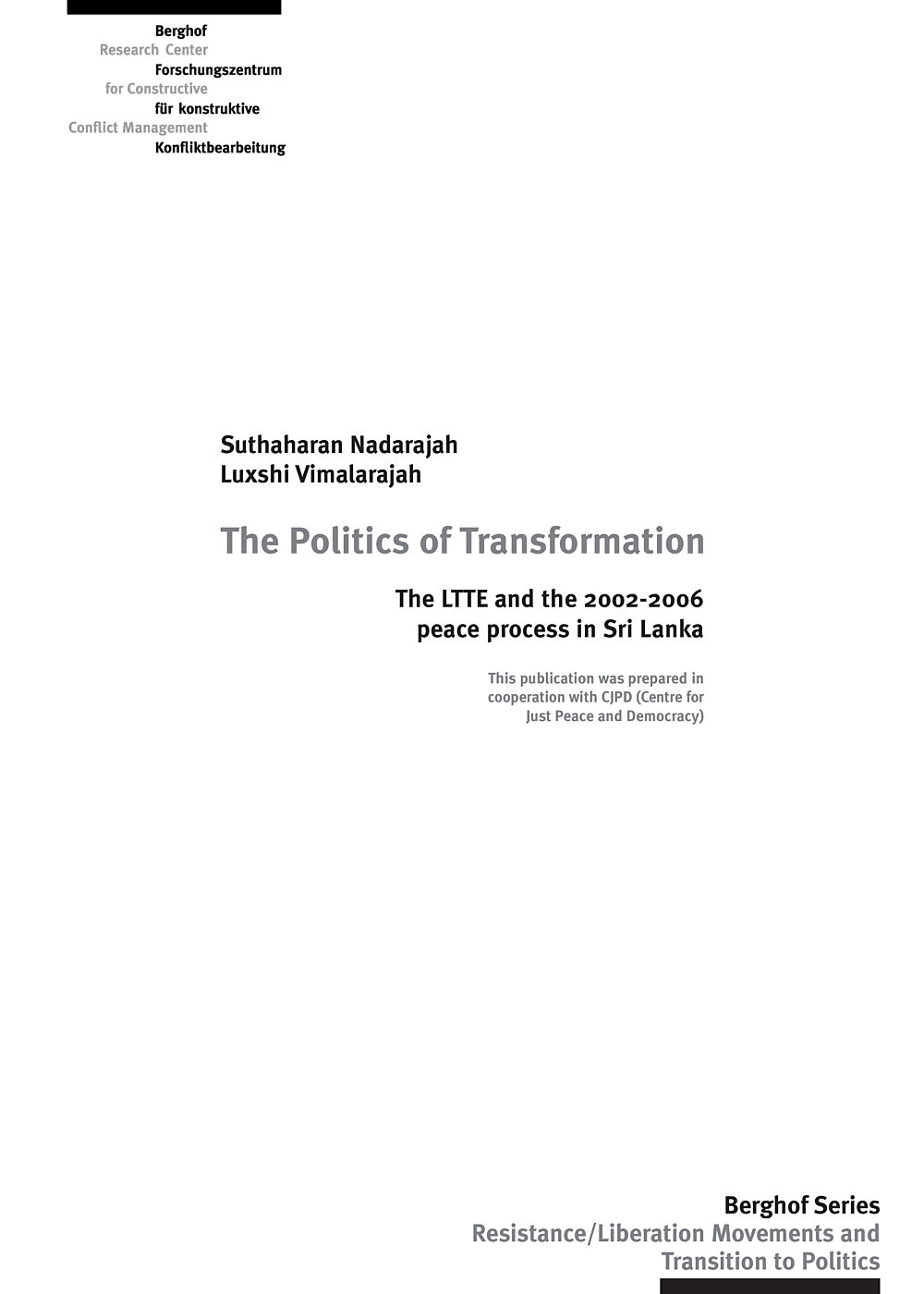
The Politics of Transformation: The LTTE and the 2002-2006 peace process in Sri LankaTransitions Series No. 4
The conflict in Sri Lanka is one of the world’s most protracted and multi-faceted. It has been aptly described as a conflict “where economic, political and cultural deprivation and grievances of a minority have provoked a violent rebellion against a state that has come to be seen as representative of only the majority ethnic group” (Orjuela 2003:198). Since long-simmering tensions between the island’s Tamil community and the Sinhala-dominated state erupted into open confrontation between several militant groups and the Sri Lankan armed forces in the early 1980s, the conflict has grown in intensity and complexity. The Liberation Tigers of Tamil Eelam (LTTE), which emerged as the dominant Tamil protagonist following a number of early confrontations within the broader Tamil resistance movement, has since developed both a conventional military force and a substantial civil administrative apparatus in the parts of the island it has established control over. Since the conflict began, there have been five formal attempts to resolve it through negotiations. All, including the Norwegian-facilitated peace process which began in 2002, have proved abortive, with the fighting resuming with greater ferocity each time.
- Year2008
- Author(s)Suthaharan Nadarajah, Luxshi Vimalarajah
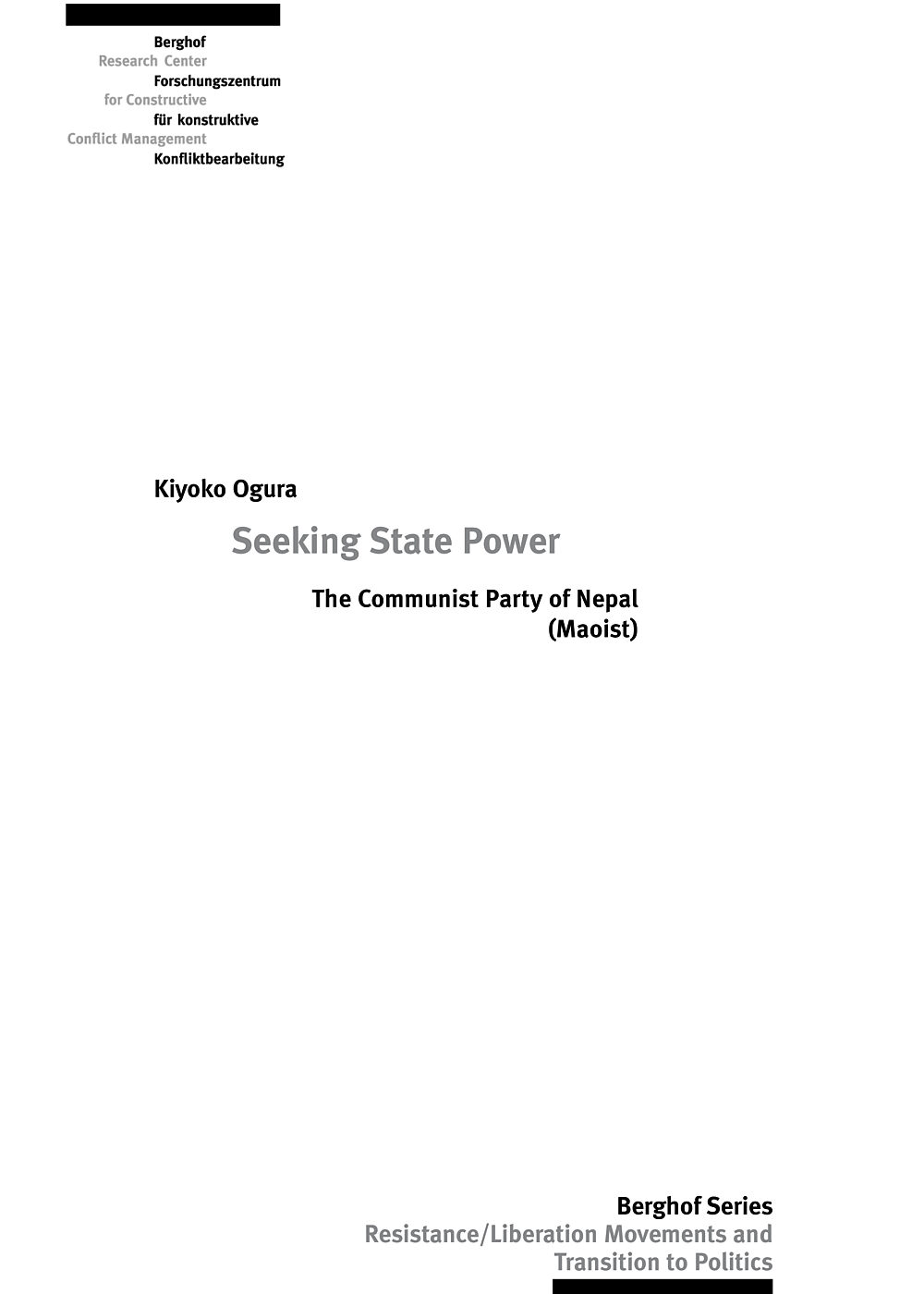
Seeking State Power: The Communist Party of Nepal (Maoist)Transitions Series No. 3
The Communist Party of Nepal (Maoist) launched an armed insurrection movement, the People’s War, on February 13, 1996. Six years earlier, this Himalayan kingdom had experienced a major political change. In April 1990, after nearly thirty years of direct rule by an autocratic monarchy, the Nepali people re-established multi-party democracy with a constitutional monarchy through a street movement lasting 50 days. On the left, the political landscape was divided into various communist factions, which went through a major phase of restructuring, leading to the formation of the CPN (United Marxist-Leninist), the biggest communist party in Nepal, as well as the CPN (Unity Center) and the United People’s Front Nepal (UPFN), both of which were formed by more radical groups. In the first general election held after 1990, the Nepali Congress (NC) party gained a majority in the House of Representatives and formed a government, while the CPN (UML) and UPFN became the second and third largest parties. Following several years of intra-party debates, two radical factions of the CPN (Unity Center) and its open political front, the UPFN, led respectively by Prachanda and Dr. Baburam Bhattarai, formally changed their party name to the CPN (M) in March 1995, with the primary objective of launching an armed rebellion: the People’s War.
- Year2008
- Author(s)Kiyoko Ogury
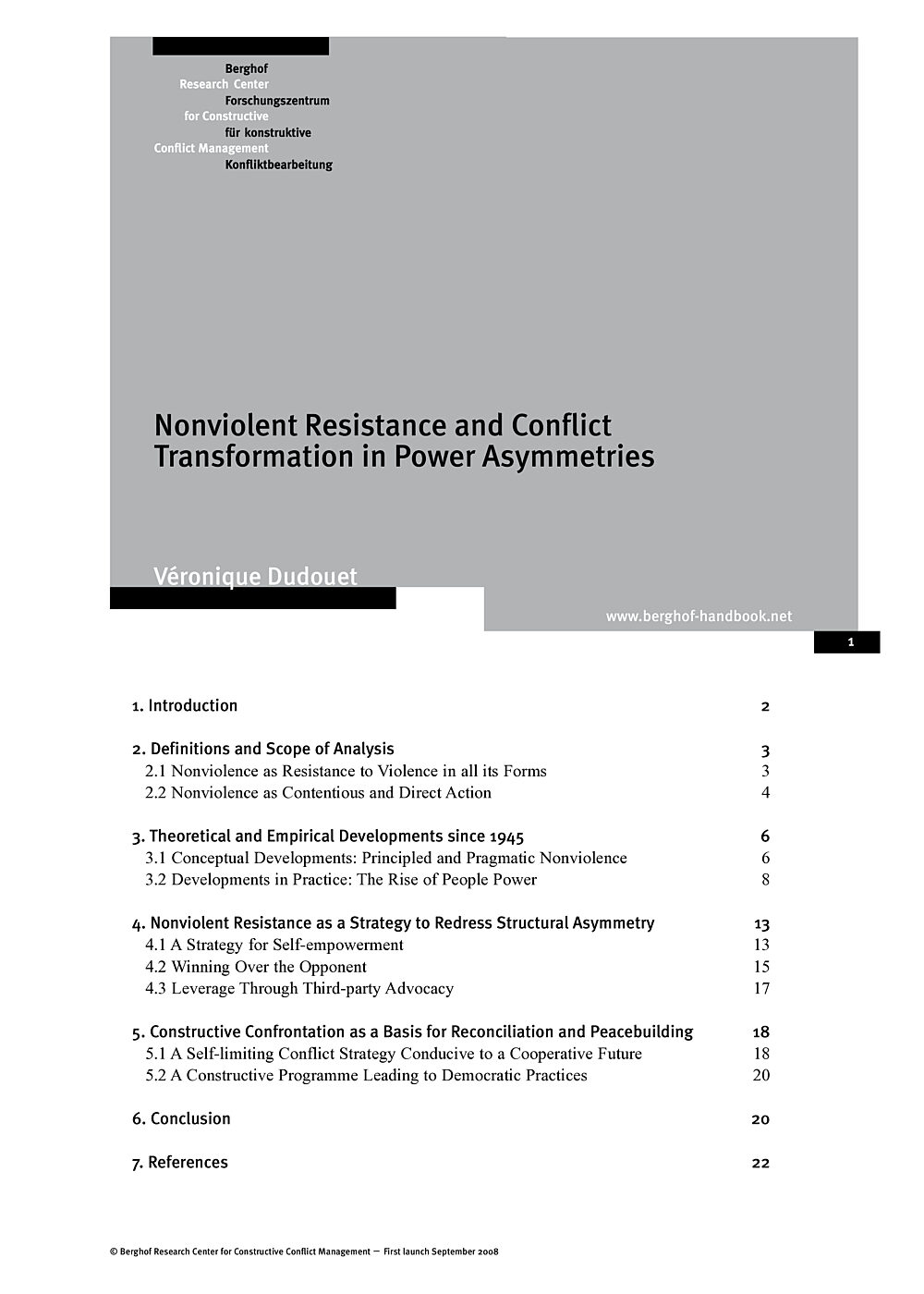
Nonviolent Resistance and Conflict Transformation in Power AsymmetriesHandbook Article
This article examines the contribution of nonviolent resistance to conflict transformation processes. It reviews conceptual and empirical developments in the field of nonviolent resistance (both ‘principled’ and ‘pragmatic’ trends), and examines the roles played by nonviolent action in support of peacemaking and peacebuilding, by transforming unbalanced power relations in preparation for conflict negotiations, and by using self-limiting conflict strategies which reduce inter-party polarisation and encourage democratic practices. Empirical illustrations are drawn from the first Palestinian intifada (1987-1993).
- Year2008
- Author(s)Véronique Dudouet
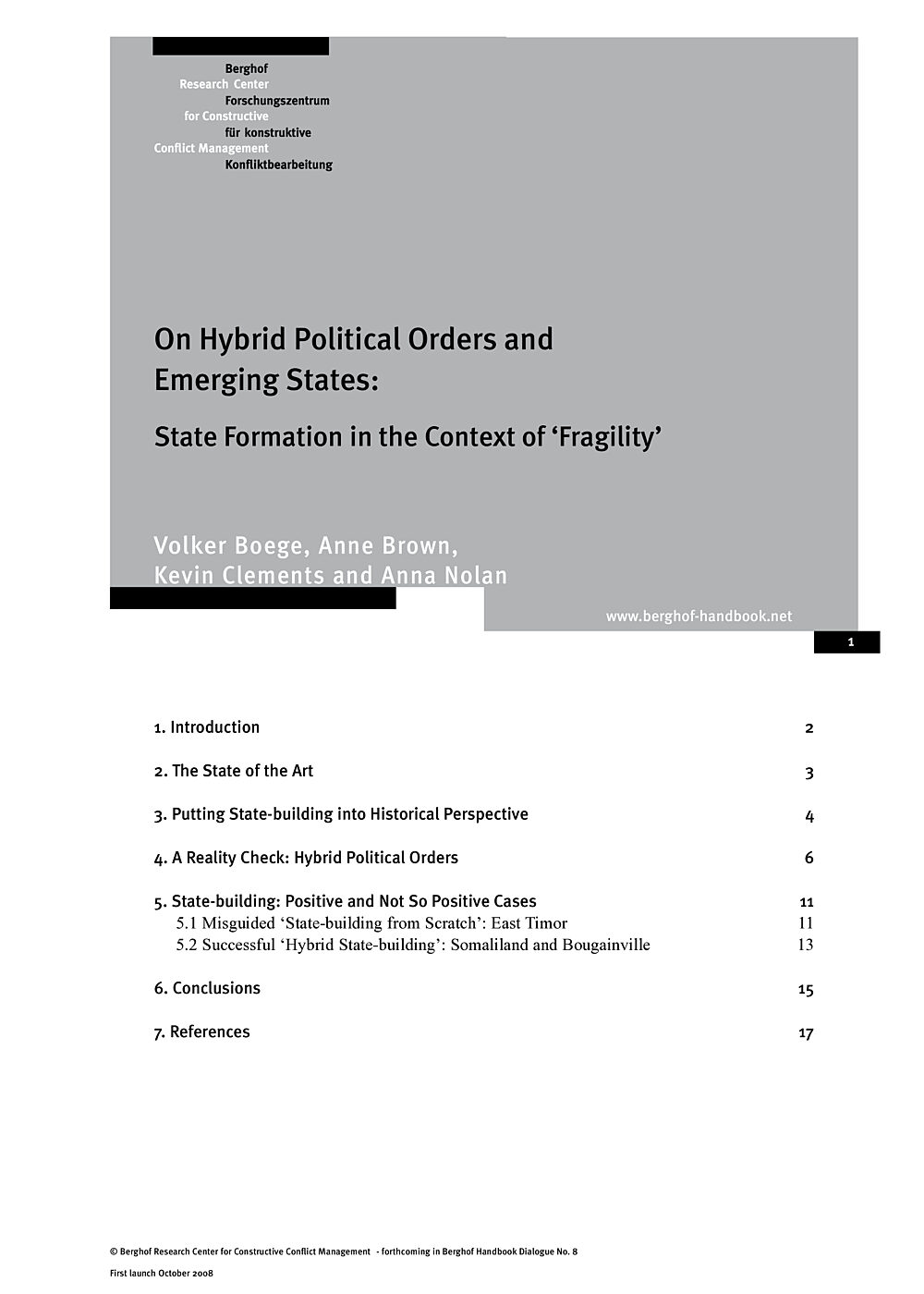
On Hybrid Political Orders and Emerging States: State-Formation in the Context of 'Fragility"Handbook Article
Puts forth the claim that conflict transformation and peacebuilding need to be of a hybrid nature and combine traditional, state- and civil society-centred approaches in order to be successful. The authors critically discuss the discourse on failing states and the current state of the art in state-building. They review successes and failures in the context of Somaliland, Bougainville and East Timor.
- Year2008
- Author(s)Volker Boege, Anne Brown, Kevin Clements, Anna Nolan
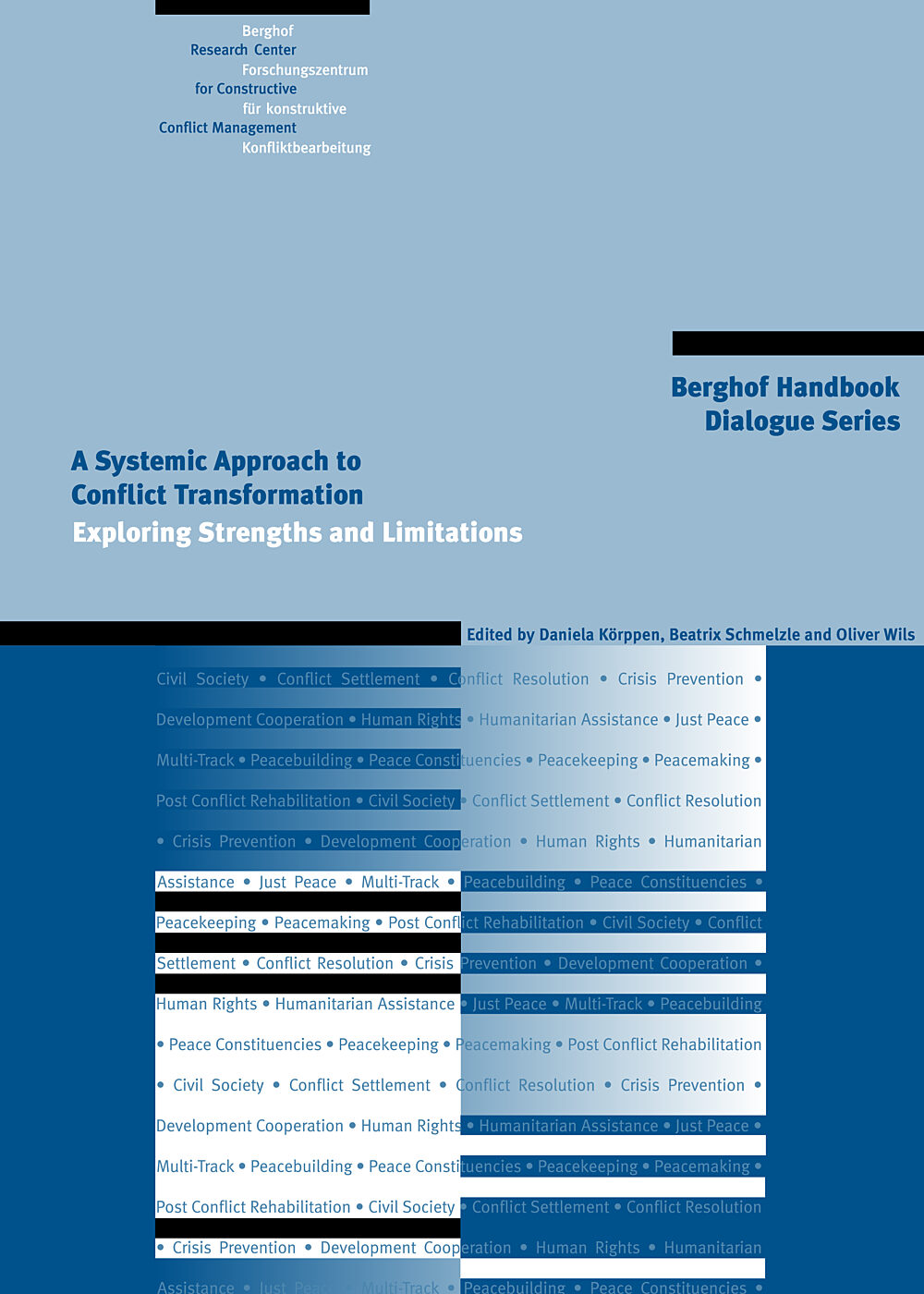
A Systemic Approach to Conflict Transformation: Exploring Strengths and LimitationsHandbook Dialogue Series No. 6 - complete
It has taken a few feedback loops, and now we proudly present this Dialogue. Norbert Ropers’ lead article lays out a rich array of systemic ideas originating from both research and practice, applied in the context of Sri Lanka. The respondents reflect, among other things, on additional tools and techniques, comparative experiences in Nepal and Kenya and the added value and utility of systemic conflict transformation.
- Year2008
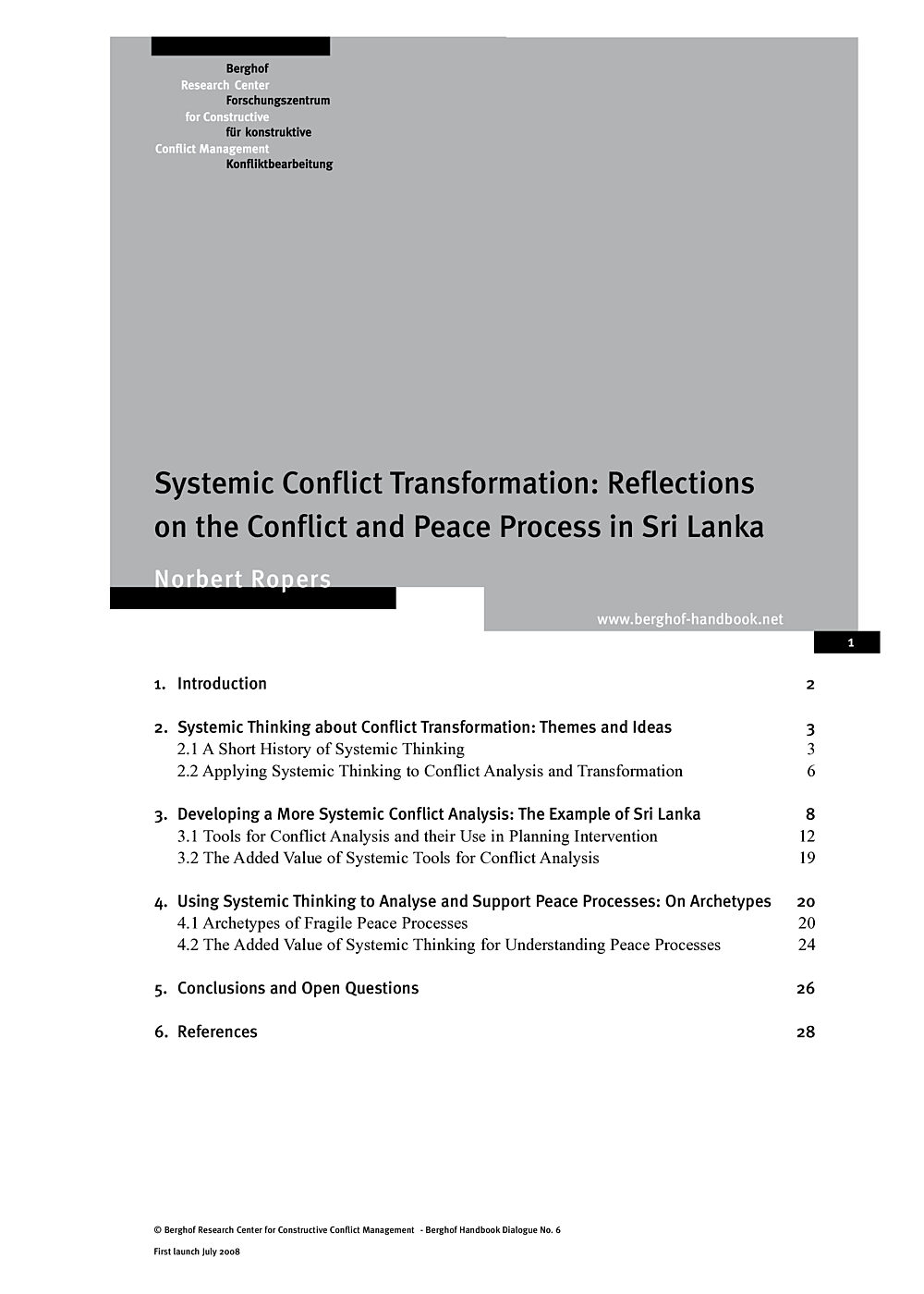
Systemic Conflict Transformation: Reflections on the Conflict and Peace Process in Sri LankaHandbook Dialogue Series 6 - lead
Systemic thinking encompasses a broad spectrum of theories, principles, methods and techniques which are all rooted in the simple observation that the whole is more than the sum of its parts. In the present article, “Systemic Conflict Transformation (SCT)” refers to the application of systemic thinking to basic challenges in conflict transformation, and a reflection of field practice from a systemic perspective. The goal is to explore, based on concrete practical experiences, how systemic thinking can help to make the transformation of internal conflicts more effective.
- Year2008
- Author(s)Norbert Ropers
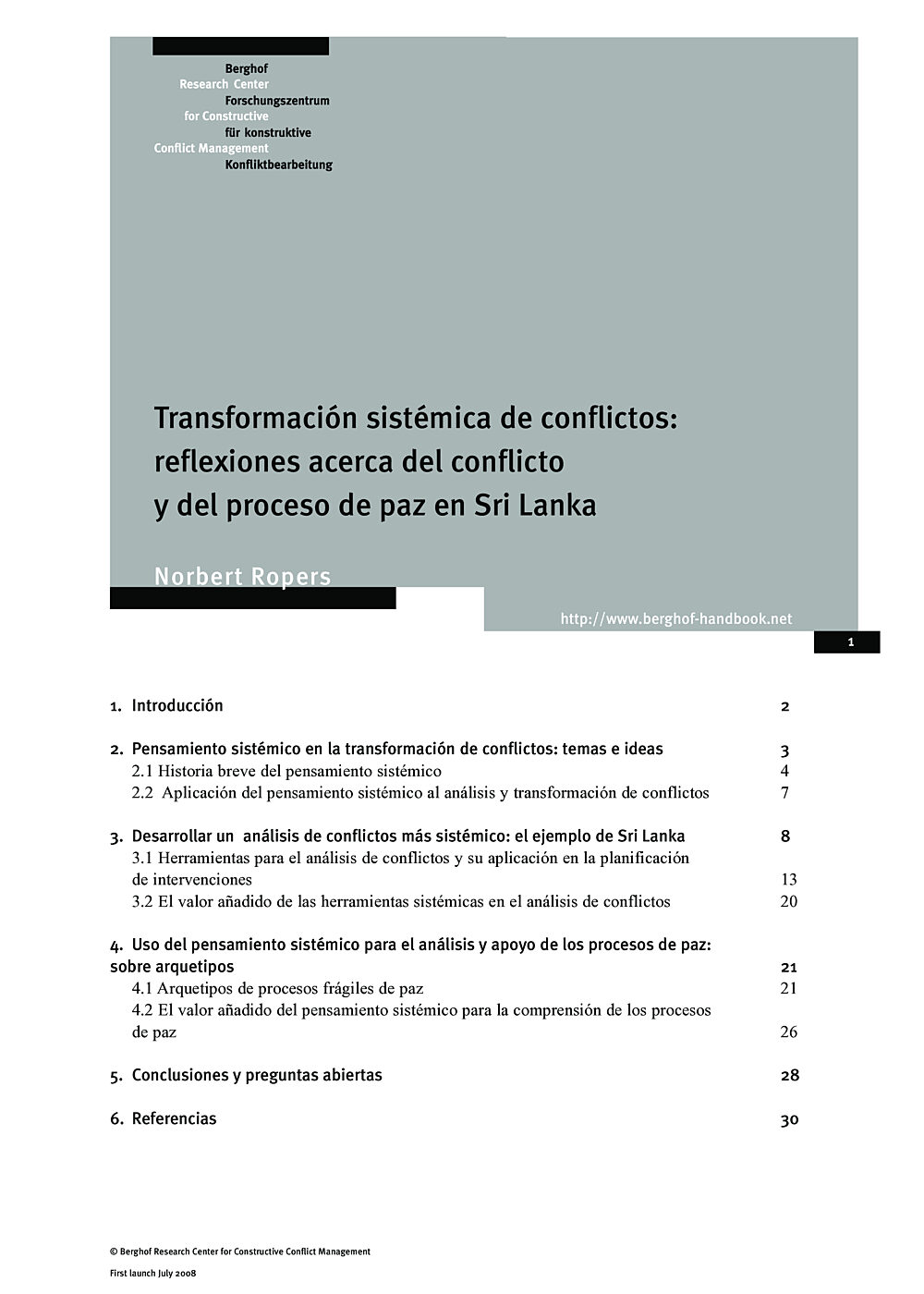
Transformación sistémica de conflictos: reflexiones acerca del conflicto y del processo de paz en Sri LankaHandbook Dialogue Series 6 - lead
El pensamiento sistémico engloba un amplio espectro de teorías, principios, métodos y técnicas, todos basados en la sencilla observación de que el todo es mucho más que la suma de sus partes. En el presente artículo, “Transformación Sistémica de Conflictos (TSC)” se refiere a la aplicación del pensamiento sistémico a los desafíos básicos presentes en la transformación de conflictos y a la reflexión que se obtiene de una práctica sobre el terreno desde una perspectiva sistémica. El objetivo es valorar, basándose en experiencias prácticas concretas, cómo el pensamiento sistémico puede ayudar a que la transformación de conflictos internos sea más eficiente.
- Year2008
- Author(s)Norbert Ropers
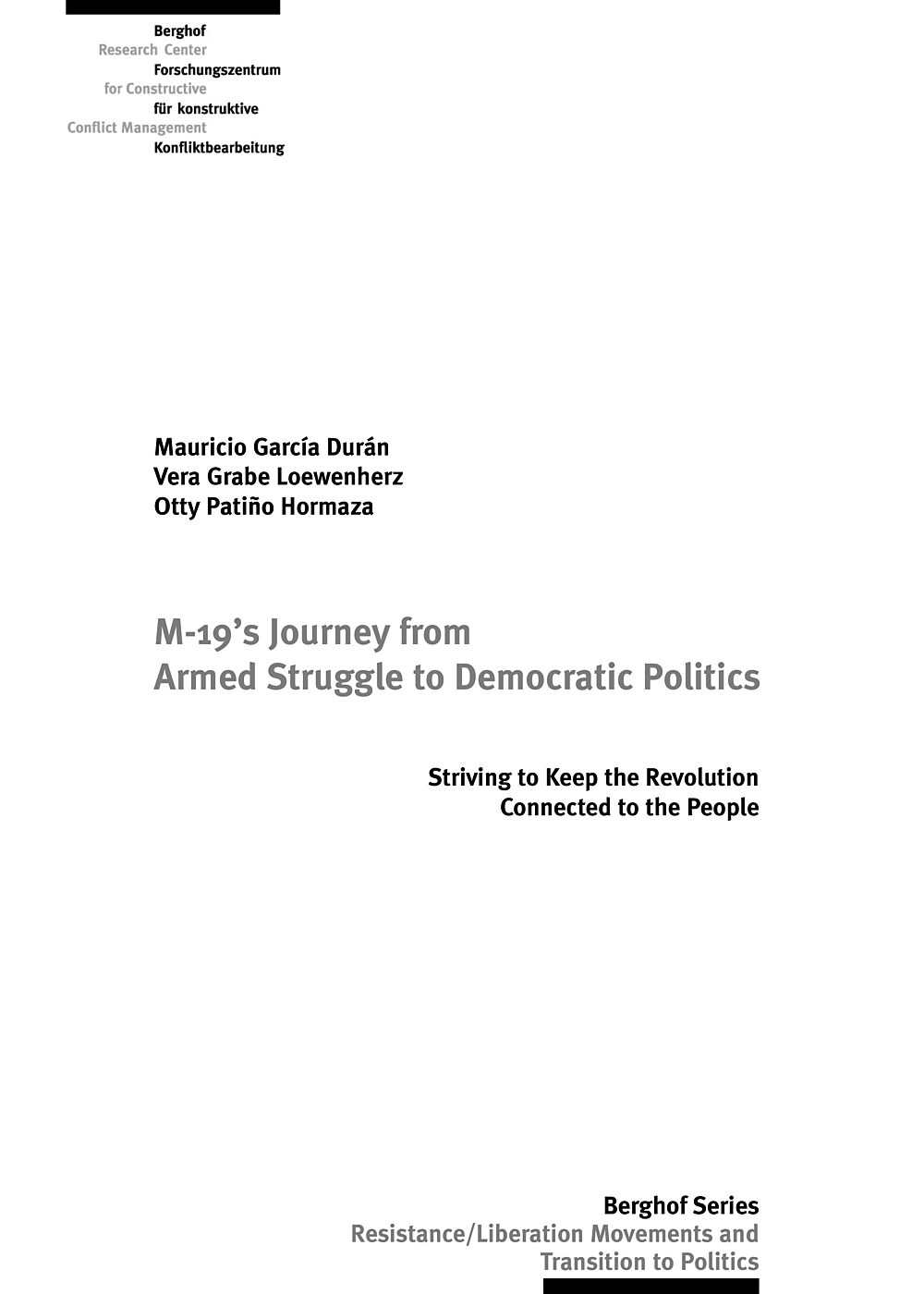
M-19's Journey from Armed Struggle to Democratic Politics: Striving to Keep the Revolution Connected to the PeopleBerghof Transitions Series No. 1
The case of Colombia is especially interesting as regards the transition of liberation or resistance movements from armed struggle to legal, political entities. Not only has it one of the longest guerrilla conflicts in the world (more than 40 years to date); it is also a place where experiments in peace-making with armed insurgents have been explored for more than 25 years. Various peace processes led to different peace agreements in the 1990s which made it possible for ca. 5,000 guerrillas to demobilise and reintegrate into social and political life. Although this did not signify the end of the armed conflict in the country, it entailed a series of political transformations which changed the context in which the nation developed and made a definitive solution to the conflict possible.
- Year2008
- Author(s)Mauricio García Durán, Vera Grabe Loewenherz, Otty Patiño Hormaza
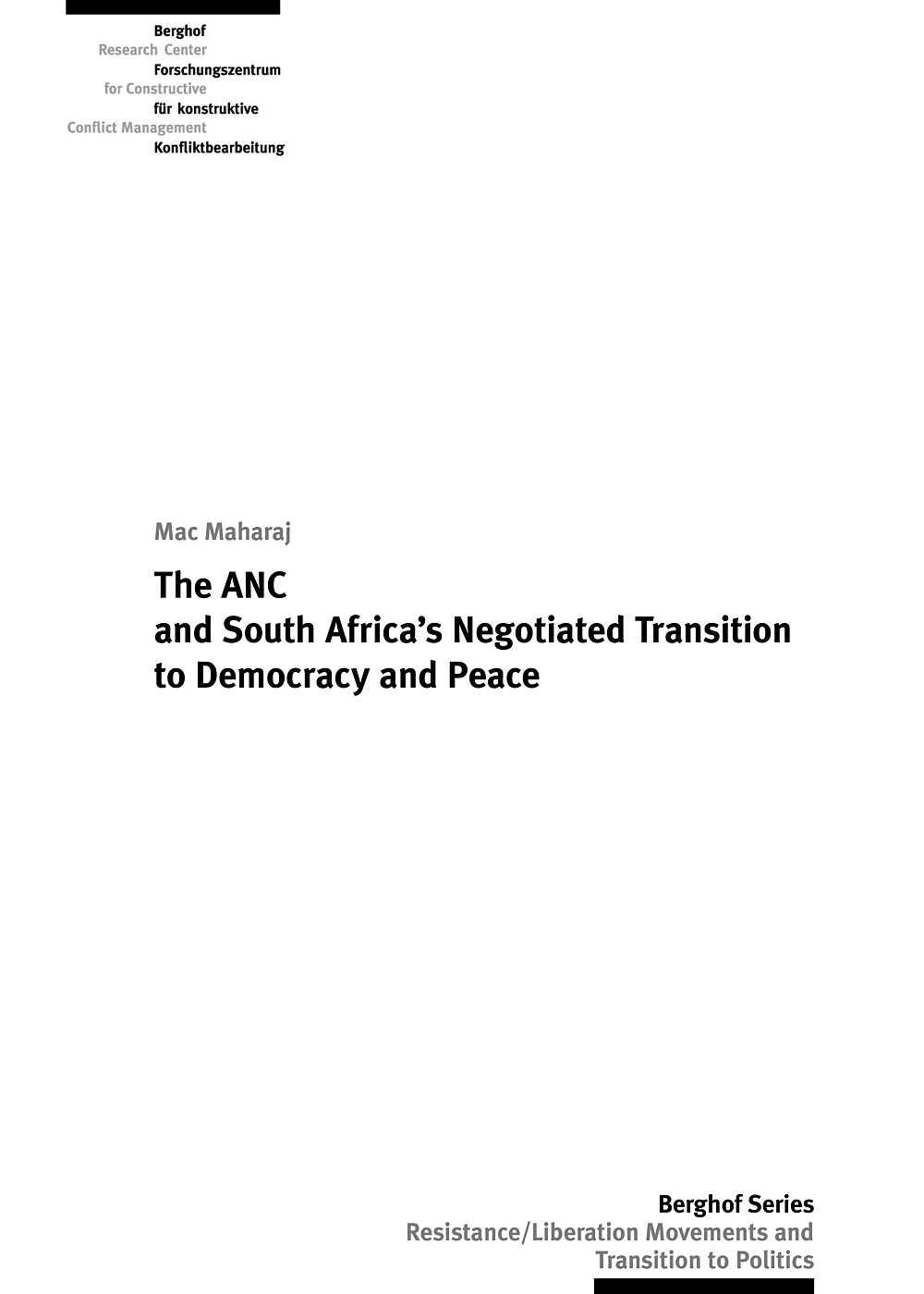
The ANC and South Africa’s Negotiated Transition to Democracy and PeaceTransitions Series No. 2
The decision to establish the military wing of the ANC, Umkhonto we Sizwe (MK-Spear of the Nation, also known as Umkhonto), was a somewhat complex process. It was a decision that involved a major departure in the policy and practice of the organisation. Many of the leaders of the ANC and its allied organisations questioned whether they had really exhausted the limits of non-violent action. Above all, it was a decision taken in conditions where the organisations were prohibited from operating peacefully.
- Year2008
- Author(s)Mac Maharaj
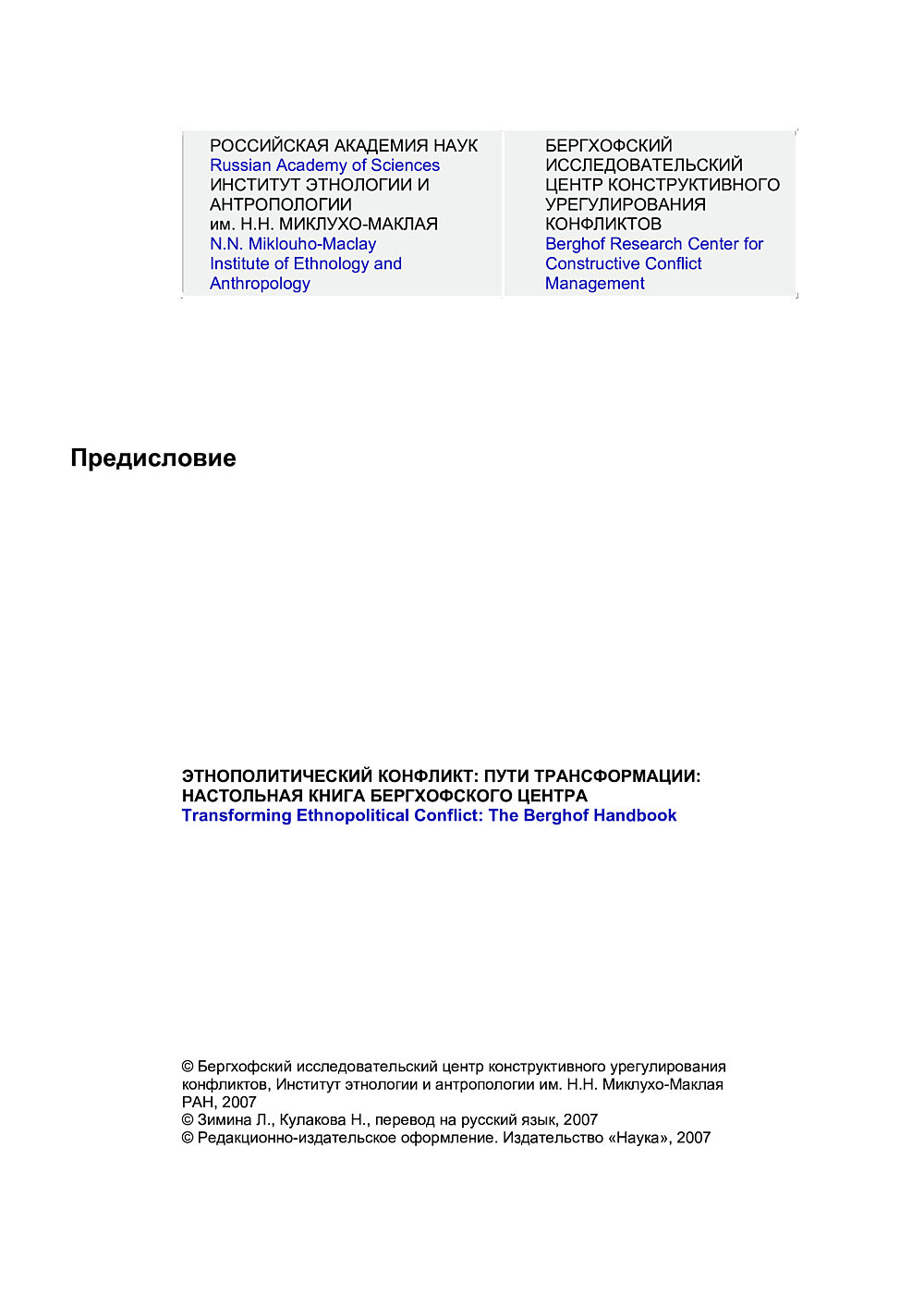
ПредисловиеHandbook Article
[Резюме - машинный перевод] Перевод Предисловия к печатному изданию Справочника Бергхофа 2004 г. "Преобразование этнополитического конфликта"
- Year2007
- Author(s)Martina Fischer, Norbert Ropers